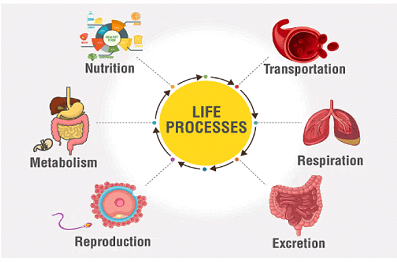What is double displacement reaction class 10
Types with examples
Introduction
Double displacement reactions, also known as metathesis reactions or double replacement reactions, are an important class of chemical reactions that you’ll frequently encounter in your chemistry studies. These reactions are characterized by the exchange of ions between two compounds, resulting in the formation of two new compounds. Understanding these reactions is crucial for success in chemistry exams and for grasping many real-world chemical processes.
The general format of a double displacement reaction can be represented as:
AB + CD → AD + CB
Where compounds AB and CD exchange their ions to form new compounds AD and CB.
What is a Double Displacement Reaction?
A double displacement reaction occurs when the positive and negative ions of two ionic compounds exchange places to form two new compounds. This type of reaction typically occurs in aqueous solutions where the ions are free to move and interact.
Key Characteristics
- Involves two ionic compounds as reactants
- Cations and anions exchange partners
- Forms two new compounds as products
- Often occurs in aqueous solutions
- Usually accompanied by a visible change (precipitate formation, color change, gas evolution)
Driving Forces
- Formation of a precipitate (insoluble solid)
- Evolution of a gas
- Formation of a weak electrolyte (like water)
- Formation of a more stable compound
Types of Double Displacement Reactions
1. Precipitation Reactions
These reactions result in the formation of an insoluble solid (precipitate) when two aqueous solutions are mixed.
AgNO3(aq) + NaCl(aq) → AgCl(s) ↓ + NaNO3(aq)
Here, silver chloride (AgCl) forms as a white precipitate.
2. Acid-Base Neutralization Reactions
When an acid reacts with a base, they neutralize each other to form salt and water.
HCl(aq) + NaOH(aq) → NaCl(aq) + H2O(l)
The hydrogen ion from the acid combines with the hydroxide ion from the base to form water.
3. Gas-Forming Reactions
Some double displacement reactions result in the formation of a gas that bubbles out of the solution.
Na2CO3(aq) + 2HCl(aq) → 2NaCl(aq) + H2O(l) + CO2(g) ↑
Carbon dioxide gas is produced, which bubbles out of the solution.
Detailed Examples of Double Displacement Reactions
Example 1: Formation of Barium Sulfate Precipitate
Reaction:
BaCl2(aq) + Na2SO4(aq) → BaSO4(s) ↓ + 2NaCl(aq)
Step-by-step analysis:
- BaCl2 dissociates into Ba2+ and Cl– ions
- Na2SO4 dissociates into 2Na+ and SO42- ions
- Ba2+ ions combine with SO42- ions to form BaSO4
- BaSO4 is insoluble in water and forms a white precipitate
- Na+ ions combine with Cl– ions to form NaCl which remains in solution
Ionic equation:
Ba2+(aq) + 2Cl–(aq) + 2Na+(aq) + SO42-(aq) → BaSO4(s) + 2Na+(aq) + 2Cl–(aq)
Net ionic equation:
Ba2+(aq) + SO42-(aq) → BaSO4(s)
Real-life application: This reaction is used in medical imaging. Barium sulfate is used as a contrast agent in X-ray examinations of the digestive tract.
Example 2: Neutralization of Hydrochloric Acid with Sodium Hydroxide
Reaction:
HCl(aq) + NaOH(aq) → NaCl(aq) + H2O(l)
Step-by-step analysis:
- HCl dissociates into H+ and Cl– ions
- NaOH dissociates into Na+ and OH– ions
- H+ ions combine with OH– ions to form H2O
- Na+ ions combine with Cl– ions to form NaCl
Ionic equation:
H+(aq) + Cl–(aq) + Na+(aq) + OH–(aq) → Na+(aq) + Cl–(aq) + H2O(l)
Net ionic equation:
H+(aq) + OH–(aq) → H2O(l)
Real-life application: This type of neutralization reaction is used in antacid medications to neutralize excess stomach acid, which contains HCl.
Example 3: Gas-Forming Reaction Between Calcium Carbonate and Hydrochloric Acid
Reaction:
CaCO3(s) + 2HCl(aq) → CaCl2(aq) + H2O(l) + CO2(g) ↑
Step-by-step analysis:
- HCl dissociates into H+ and Cl– ions
- H+ ions react with CaCO3 to form H2CO3
- H2CO3 is unstable and decomposes to H2O and CO2
- Ca2+ ions combine with Cl– ions to form CaCl2
- CO2 bubbles out of the solution as a gas
Ionic equation:
CaCO3(s) + 2H+(aq) + 2Cl–(aq) → Ca2+(aq) + 2Cl–(aq) + H2O(l) + CO2(g)
Net ionic equation:
CaCO3(s) + 2H+(aq) → Ca2+(aq) + H2O(l) + CO2(g)
Real-life application: This reaction is the basis for the fizzing you see when an antacid tablet (containing calcium carbonate) is dropped into water. It’s also responsible for the formation of caves in limestone (CaCO3) regions due to acidic rainwater.
Solubility Rules and Predicting Double Displacement Reactions
To predict whether a double displacement reaction will occur, you need to know the solubility rules that determine if a precipitate will form. Here are the key solubility rules that you should memorize for your exams:
Solubility Rules
| Soluble Compounds | Exceptions |
|---|---|
| All compounds of Group 1 elements (Li+, Na+, K+, etc.) and ammonium (NH4+) | None |
| All nitrates (NO3–), acetates (CH3COO–), and perchlorates (ClO4–) | None |
| All chlorides (Cl–), bromides (Br–), and iodides (I–) | Compounds with Ag+, Pb2+, Hg22+ |
| All sulfates (SO42-) | Compounds with Ca2+, Sr2+, Ba2+, Pb2+, Ag+, Hg22+ |
| Insoluble Compounds | Exceptions |
|---|---|
| All carbonates (CO32-), phosphates (PO43-), and sulfides (S2-) | Compounds with Group 1 elements and NH4+ |
| All hydroxides (OH–) | Compounds with Group 1 elements, Sr2+, Ba2+, and NH4+ |
| All oxides (O2-) | Compounds with Group 1 elements and some Group 2 elements |
Note: Predicting Double Displacement Reactions
A double displacement reaction is likely to occur if one of the following happens:
- A precipitate forms (use solubility rules to predict)
- A gas is produced (common gases: CO2, SO2, H2S, NH3)
- Water or a weak electrolyte forms
If none of these occurs, the reaction may not proceed to a significant extent.
Applications of Double Displacement Reactions
Industry
- Water Treatment: Adding calcium hydroxide (slaked lime) to remove hardness in water
- Soap Making: Production of soap by reacting oils with sodium hydroxide
- Manufacturing: Production of pigments, like lead chromate (PbCrO4)
- Metallurgy: Extraction and purification of metals
Medicine and Daily Life
- Antacids: Neutralizing stomach acid (HCl) with bases like Mg(OH)2 or CaCO3
- Medical Diagnostics: Barium sulfate as X-ray contrast agent
- Food Science: Cheese production involves precipitation of milk proteins
- Analytical Chemistry: Qualitative analysis of unknown samples
- Agriculture: Formation of fertilizers
Exam-Focused Tips
Key Points to Remember
-
Always check for the driving force: For a double displacement reaction to occur, there must be a driving force such as:
- Formation of a precipitate
- Formation of a gas
- Formation of a weak electrolyte (like water)
-
Apply solubility rules: Memorize the solubility rules to predict which combinations of ions will form precipitates.
-
Write complete ionic and net ionic equations: Many exams require you to write not just the molecular equation but also the complete ionic and net ionic equations.
-
Balance the equations: Double check that all double displacement reaction equations are properly balanced with the correct coefficients and subscripts.
-
Identify spectator ions: In net ionic equations, be sure to eliminate spectator ions (ions that appear unchanged on both sides of the equation).
Common Exam Questions
1. Predict the products of the following reaction and write a balanced equation:
AgNO3(aq) + KCl(aq) → ?
Answer: AgNO3(aq) + KCl(aq) → AgCl(s) + KNO3(aq)
2. Write the net ionic equation for the reaction between calcium chloride and sodium carbonate.
Answer: Ca2+(aq) + CO32-(aq) → CaCO3(s)
3. Will a precipitate form when solutions of KNO3 and NaCl are mixed? Explain your answer.
Answer: No precipitate will form because all possible combinations of ions (K+, Na+, NO3–, and Cl–) form soluble compounds according to the solubility rules.
Common Mistakes to Avoid
Watch Out For These Errors
-
Incorrect Prediction of Products: Make sure you correctly identify which ions will combine in the products. Remember to apply the crisscross method for charges.
-
Forgetting to Check Solubility: Not all double displacement reactions form precipitates. Use solubility rules to determine if a precipitate will form.
-
Incorrect Balancing: Always ensure that the chemical equation is balanced with the correct coefficients.
-
Incorrect States of Matter: Be sure to specify the correct states of matter (s, l, g, aq) for each substance in the equation.
-
Not Recognizing Spectator Ions: When writing net ionic equations, remember to remove spectator ions that appear unchanged on both sides.
Summary and Key Takeaways
-
Double displacement reactions involve the exchange of ions between two compounds to form two new compounds, following the general pattern: AB + CD → AD + CB.
-
These reactions are driven by the formation of a precipitate, a gas, or a weak electrolyte like water.
-
The main types include precipitation reactions, acid-base neutralization, and gas-forming reactions.
-
Solubility rules are essential for predicting whether a precipitate will form in a double displacement reaction.
-
For exam success, practice writing balanced molecular equations, complete ionic equations, and net ionic equations.
-
Double displacement reactions have numerous applications in industry, medicine, and daily life, making them one of the most practical and relevant reaction types to study.



